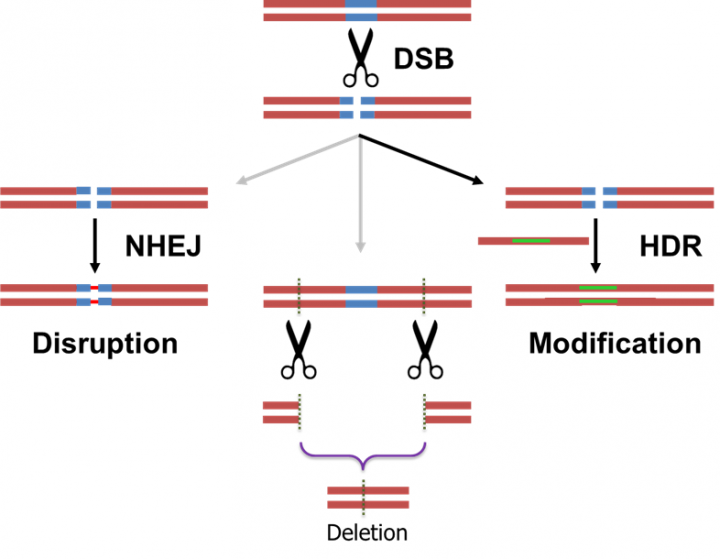Research
Topics covered in the Whitelaw lab

We aim to improve livestock health, develop new livestock breeding strategies to enhance overall agricultural productivity, and progress innovative biotech solutions in biomedicine through evaluating application of genetic engineering and advanced reproductive technologies.
By altering livestock genomes using precise genome editing technology like CRISPR-Cas9 we:
- tackle costly livestock diseases,
- devise innovative breeding strategies,
- address the challenge of increasing protein production in livestock agriculture,
- investigate how gene drives could be applied in animals and
- explore opportunities to develop new disease-treatments.
CRISPRs create double-stranded breaks that can be used to introduce desirable edits.
Here are some of our research interests:
Fighting infectious diseases
Tackling the leading cause of losses in livestock.
Improving food security (milk production)
How can we make better milk?
Gene drive
Alternative pest control
Multiplex gene editing
Targeting multiple regions in a genome
Human disease models
Livestock can be good models for studying human diseases.
Breeding for the future
New breeding technologies for the future

